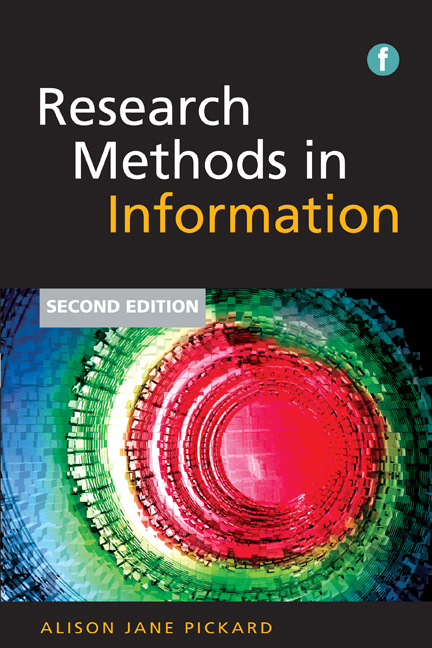Book contents
- Frontmatter
- Contents
- Preface to the second edition
- Acknowledgements
- Introduction
- Part 1 Starting the research process
- Part 2 Research methods
- 8 Case studies
- 9 Surveys
- 10 Experimental research
- 11 Usability testing
- 12 Ethnography
- 13 Delphi study
- 14 Action research
- 15 Historical research
- 16 Grounded theory: method or analysis?
- Part 3 Data collection techniques
- Part 4 Data analysis and research presentation
- Part 5 Glossary and references
- Index
10 - Experimental research
from Part 2 - Research methods
Published online by Cambridge University Press: 08 June 2018
- Frontmatter
- Contents
- Preface to the second edition
- Acknowledgements
- Introduction
- Part 1 Starting the research process
- Part 2 Research methods
- 8 Case studies
- 9 Surveys
- 10 Experimental research
- 11 Usability testing
- 12 Ethnography
- 13 Delphi study
- 14 Action research
- 15 Historical research
- 16 Grounded theory: method or analysis?
- Part 3 Data collection techniques
- Part 4 Data analysis and research presentation
- Part 5 Glossary and references
- Index
Summary
It is almost impossible to establish an experimental situation involving human subjects where a benchmark accurately measures every possible relevant variable present in the pre-test situation.
(Bertrand and Hughes, 2005, 46)In social research there is a familiar slogan that states, ‘covariance is not causation’. The two concepts are very different in terms of their context: the concept of causation is theoretical, whereas covariance is empirical.
(Corbetta, 2003, 91)Introduction
Experimental research epitomizes the positivist paradigm discussed in Chapter 1. The opening quote in this chapter may appear to be very negative; the reason it is here is to highlight that experimental research has its place in library and information science but I would rarely advocate the application of this method in a study that involved human subjects. This is not to say it has not been done – it has – but I would argue that there are too many unstable elements involved ever to be in a position to construct a true experiment involving human beings and all the complex internal and external variables they are subject to. Experiments are possible on systems with stable functions, variables that can be systematically controlled; the human condition does not fall into this category. ‘Effects studies’ have been carried out in many branches of social science, but inference made from these studies is usually tenuous at best.
Before you decide to embark on experimental research you need to be very sure about what you are doing and the level of control you have over the situation. An experiment is a controlled research situation, which means ‘(a) that unwanted variables and external influences can be kept out of the experimental environment, and (b) that the researcher can establish the experimental conditions down to the smallest details’ (Corbetta, 2003, 94). When these conditions are not entirely met then the researcher has a responsibility to identify the extent of the error. ‘Experimental error occurs when a change in the DV (dependent variable) is produced by any variable other than the IV (independent variable)’ (Burns, 2000, 134).
Information
- Type
- Chapter
- Information
- Research Methods in Information , pp. 119 - 126Publisher: FacetPrint publication year: 2013
